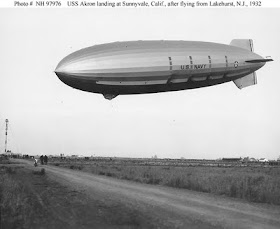Review by Bill Doughty
“Where are our aircraft carriers?”
It’s a question the Commander in Chief asks when facing crises, according to Kennedy, Kissinger and Clinton -- and personally attested to by former President George Herbert Walker Bush in his forward to One Hundred Years of U.S. Navy Air Power, edited by Douglas V. Smith, of the Naval War College.
The ability to project power from the sea and the agility/flexibility of patrol planes, helicopters, jets and other Navy aircraft, past and present, is celebrated in this book, published to coincide with the Centennial of Naval Aviation.
With fifteen chapters, each written by a professor, historian or strategist, the book “tells a tale rife with courage and sacrifice, dangerous experimentation and awe-inspiring innovation, tenacity and dedication,” according to Bush, Sr.
 |
| Glenn Curtiss |
The development of naval aviation is shown in the context of history by Dr. Stephen Stein, who teaches at the University of Memphis. Practical aviation started in 1783 with the first balloon flights. Ten years later, France’s Revolutionary Army used observation balloons, although Napoleon found little use for them in his war with Britain.
Civilians operated balloons for the Union Army in the American Civil War to sketch Confederate fortifications and artillery positions.
Civilians operated balloons for the Union Army in the American Civil War to sketch Confederate fortifications and artillery positions.
We see the fragile beginnings of carrier aviation with Eugene Ely’s flight in a Curtiss pusher airplane from USS Birmingham (CV-2) on Nov. 14, 1910.
When World War I began, the U.S. had less than one tenth the number of airplanes as Russia or Germany and about a fifth as many as Britain.
In Chapter 4, “Ships in the Sky,” Professor John E. Jackson writes about lighter-than-air craft and tells the story of Akron (ZRS-4), a Goodyear-Zeppelin fleet airship that demonstrated an unprecedented ability to gather intelligence. Akron was lost in 1933 in a violent storm, with a loss of 73 of the 76 crew, including Rear Adm. William A. Moffett.
The book introduces us to other proponents of naval aviation: Adm. Joseph Mason “Bull” Reeves, President (and former assistant secretary of the Navy) Franklin D. Roosevelt, Marine Corps 1st Lt. Alfred A. Cunningham, Coast Guard Cmdr. Frank Erickson, inventor Glenn Curtiss, Adm. Ernest J. King, Lt. John Towers, Lt. Cmdr. Henry C. Mustin and Capt. Mark Bristol and Adm. Charles Badger, along with the pantheon introduced in Revolt of the Admirals.
How did leaders deal with geographic challenges in the Pacific in WWII? What did Adm. Reeves do to organize carrier flight deck operations? How did fighters and patrol aircraft evolve and how was rotary wing aviation born? Why did naval aviation succeed in Korea, Vietnam and the Middle East? All good questions explored in One Hundred Years of U.S. Navy Air Power.
In Chapter 13, “Naval Aviation in the Korean and Vietnam Wars,” Professor Gary J. Ohls says that strong weapons and skilled personnel are not enough to prevail in war:
“The most important lesson of Korea and of the history of warfare in general is that wars are won by adequate strategy and not tactical or operational excellence alone. This seems to have been completely lost on America’s leaders of the 1960s.” Knowing how to attack may not be as important as knowing whether to attack, with an understanding of the full spectrum of capabilities.
Dr. Mike Pavelec, who teaches at the School of Advanced Air and Space Studies at Maxwell Air Force Base, shows in Chapter 14 how the Navy developed a perspective of Maritime Strategy when it introduced aircraft and submarines, giving the Navy a 3D aspect in integrated abilities above, below and on the surface of the oceans, helping advance a new naval and maritime strategy.
 |
| F-14 and F\A-18 aboard USS Enterprise (CVN-65) |
In “Conclusions” Douglas V. Smith returns to the question asked by U.S. presidents and advisors: “Where are our aircraft carriers?”
Smith says it’s no accident that nearly half of American presidents since WWII -- six of 13 -- have served in uniform in the U.S. Navy: Presidents Kennedy, Johnson, Nixon, Ford, Carter and Bush (41).
“All came to their office aware of the options afforded by, and comfortable with, the strategic and operational applications of Navy -- and particularly carrier air wing -- aviation as an instrument of national power.”
 Smith concludes, “In the centennial year of U.S. Navy air power it is hoped that all Americans pause to salute those patriots who have ‘carried America’s flag into battle in pursuit of a just cause.’ They have shaped America’s history and will continue to do so in the second century of U.S. Navy air power.”
Smith concludes, “In the centennial year of U.S. Navy air power it is hoped that all Americans pause to salute those patriots who have ‘carried America’s flag into battle in pursuit of a just cause.’ They have shaped America’s history and will continue to do so in the second century of U.S. Navy air power.”Speaking of a good cause, recently the USS Ronald Reagan (CVN-76), along with various Navy patrol squadrons and helicopter squadrons and other assets, joined other U.S. military teams and the Japan Self-Defense Force to perform humanitarian relief missions in Operation Tomodachi, in the wake of the earthquake and tsunami in Japan.
This review only scratches the surface of what can be learned about the history, heroes and hardware in One Hundred Years of U.S. Navy Air Power, must reading for anyone interested in the topic. This book is published by the Naval Institute Press and is available at www.usni.org.

No comments:
Post a Comment